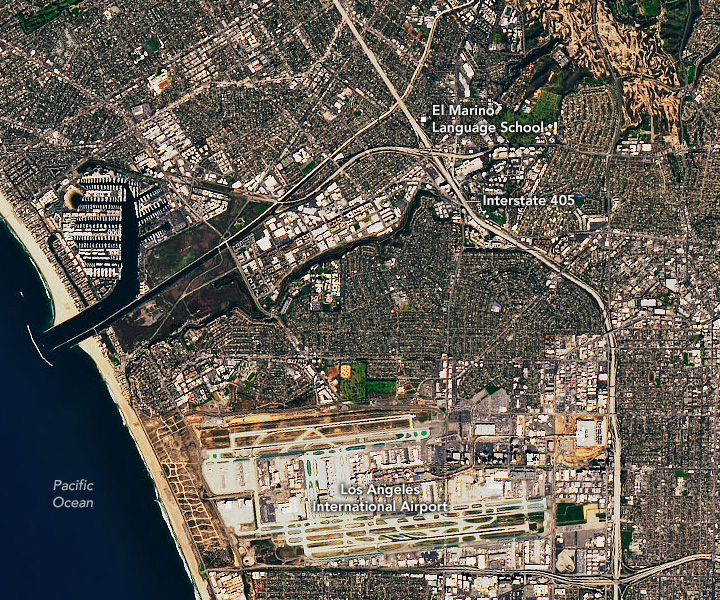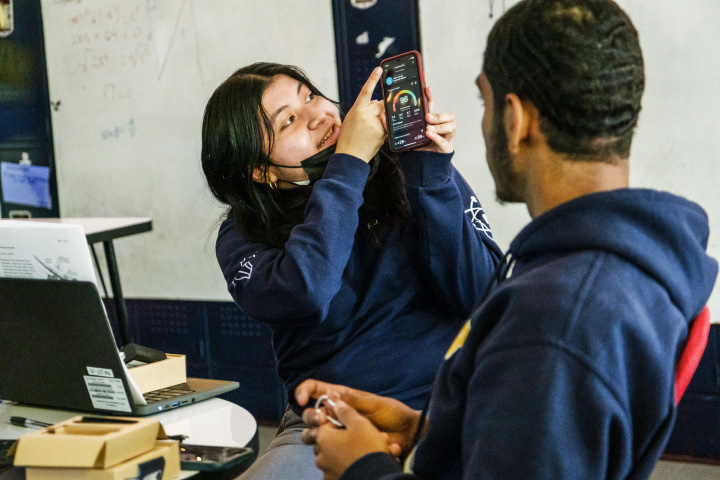An Unequal Air Pollution Burden at School
An Unequal Air Pollution Burden at School nasa.gov


An Unequal Air Pollution Burden at School
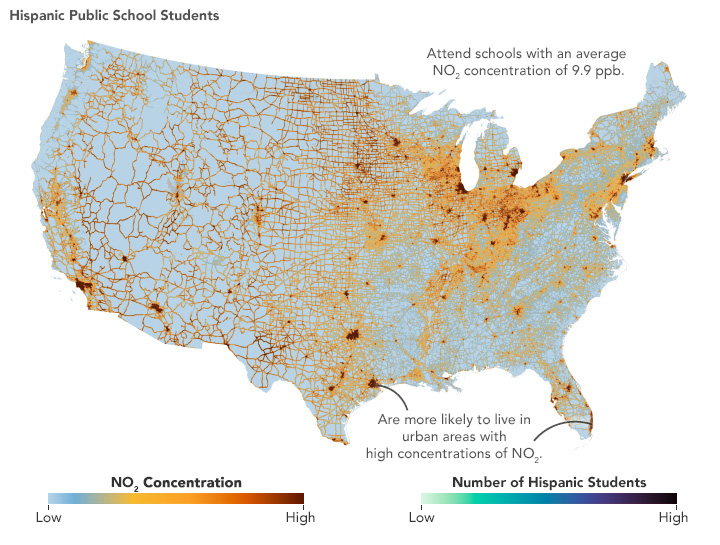
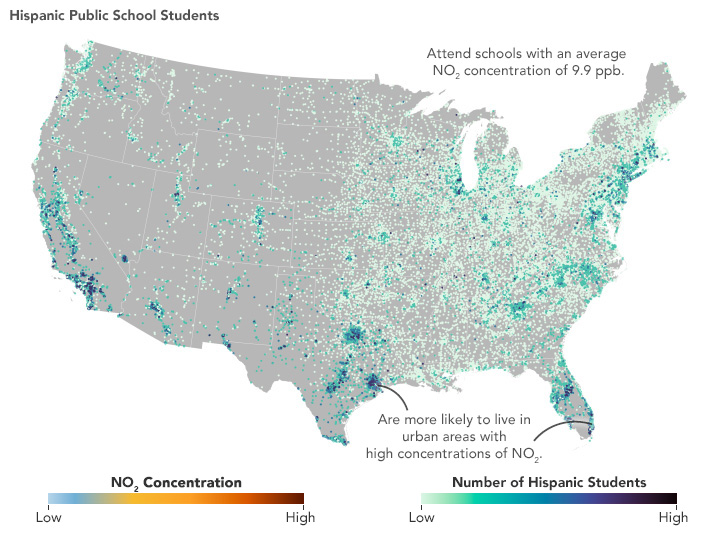
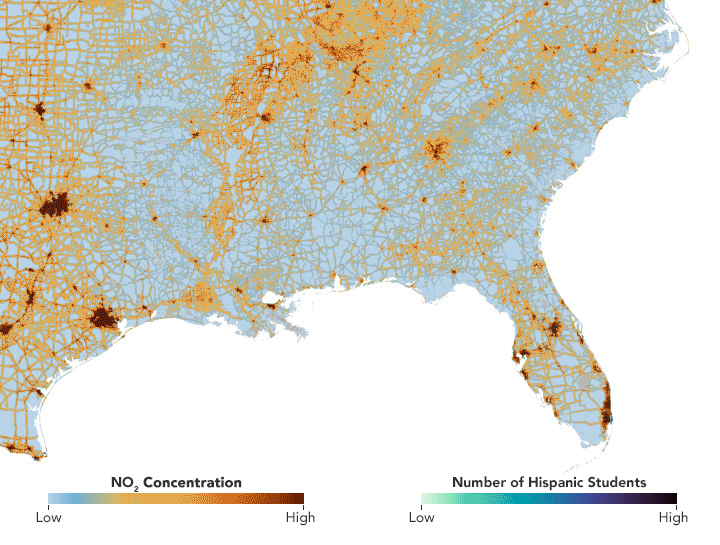
Introduction
The El Marino Language School in Culver City, California, is located near Interstate 405, one of the busiest highways in the United States. The school serves primarily Hispanic, Black and African American, and Asian students. This area of Southern California often experiences elevated concentrations of nitrogen dioxide (NO2) as measured by satellites.
Sustainable Development Goals (SDGs)
- Goal 3: Good Health and Well-being
- Goal 4: Quality Education
- Goal 11: Sustainable Cities and Communities
- Goal 13: Climate Action
- Goal 15: Life on Land
Research Findings
An analysis conducted by Michael Cheeseman and colleagues at Colorado State University and the National Oceanic and Atmospheric Administration revealed significant disparities in air pollution exposure among different racial and ethnic groups in the United States. The study considered ambient air pollution concentrations for 98,537 public schools and found that Hispanic, Asian, and Black and African American students are exposed to higher levels of air pollution, particularly in urban areas.
Air pollution has negative impacts on health and academic performance. Long-term exposure to air pollutants such as NO2 has been linked to increased risks of asthma, respiratory infections, and reduced lung function among children. Some research also suggests a connection between air pollution exposure and impaired cognitive function, depression, lower test scores, and low school attendance rates.
The study focused on NO2 concentrations, which showed the strongest relationship between race or ethnicity and air pollution measurements. NO2 is a highly reactive gas formed by combustion and mainly comes from fossil fuel combustion for transportation and industrial activity.
Urban-Rural Divide
The disparities in air pollution exposure are largely influenced by where different racial and ethnic groups tend to live. Hispanic, Asian, and Black and African American students are often located in dense urban areas with high levels of vehicle traffic, factories, and other sources of NO2. In contrast, white students tend to live in rural or suburban areas with less air pollution. This urban-rural divide is particularly pronounced in the Midwest and Northeast regions of the United States.
Solutions and Actions
Zoning rules that prevent schools from being built near major sources of air pollution, such as highways, airports, ports, and factories, are suggested as a logical next step to reduce disparities. Additionally, improving the safety of students in schools with high exposure to pollution can be achieved through measures like installing air filtration systems and other upgrades to improve indoor air quality.
Efforts are being made to use satellite data to address environmental inequities and inform actions. NASA’s Health and Air Quality Applied Sciences Team (HAQAST) is working with platforms used by the environmental justice community, such as the Environmental Protection Agency’s EJScreen tool, to potentially include satellite observations. NASA has also scaled up its equity and environmental justice research program, funding projects that involve citizen science and community partnerships.
Conclusion
The research highlights the need for solutions that match the scale of the problem of air pollution disparities among different racial and ethnic groups. By utilizing satellite data and collaborating with communities, it is possible to address these environmental inequities and work towards achieving the Sustainable Development Goals.
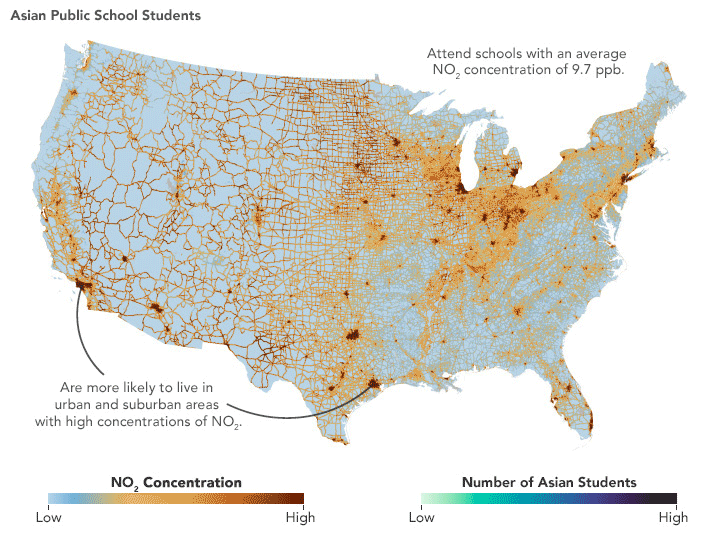
References
- Cheeseman, Michael, et al. (2022). “Title of Research Article.” GeoHealth. DOI: 10.1029/2022GH000672
- Environmental Protection Agency. “Setting and Reviewing Standards to Control NO2 Pollution.” Retrieved from: <
SDGs, Targets, and Indicators
1. Which SDGs are addressed or connected to the issues highlighted in the article?
- SDG 3: Good Health and Well-being
- SDG 4: Quality Education
- SDG 10: Reduced Inequalities
- SDG 11: Sustainable Cities and Communities
- SDG 13: Climate Action
- SDG 15: Life on Land
2. What specific targets under those SDGs can be identified based on the article’s content?
- SDG 3.9: By 2030, substantially reduce the number of deaths and illnesses from hazardous chemicals and air, water, and soil pollution and contamination.
- SDG 4.5: By 2030, eliminate gender disparities in education and ensure equal access to all levels of education and vocational training for the vulnerable, including persons with disabilities, indigenous peoples, and children in vulnerable situations.
- SDG 10.2: By 2030, empower and promote the social, economic, and political inclusion of all, irrespective of age, sex, disability, race, ethnicity, origin, religion, or economic or other status.
- SDG 11.6: By 2030, reduce the adverse per capita environmental impact of cities, including by paying special attention to air quality and municipal and other waste management.
- SDG 13.2: Integrate climate change measures into national policies, strategies, and planning.
- SDG 15.9: By 2020, integrate ecosystem and biodiversity values into national and local planning, development processes, poverty reduction strategies, and accounts.
3. Are there any indicators mentioned or implied in the article that can be used to measure progress towards the identified targets?
- Ambient air pollution concentrations for public schools
- Differences in exposure to air pollution between racial and ethnic groups
- Long-term health effects of air pollution on children
- Impaired cognitive function, depression, lower test scores, and low school attendance rates linked to air pollution exposure
- Differences in NO2 concentrations between different racial and ethnic groups
- Disparities in air pollution levels based on location and population density
SDGs, Targets, and Indicators Table
SDGs Targets Indicators SDG 3: Good Health and Well-being Target 3.9: By 2030, substantially reduce the number of deaths and illnesses from hazardous chemicals and air, water, and soil pollution and contamination. – Long-term health effects of air pollution on children
– Impaired cognitive function, depression, lower test scores, and low school attendance rates linked to air pollution exposureSDG 4: Quality Education Target 4.5: By 2030, eliminate gender disparities in education and ensure equal access to all levels of education and vocational training for the vulnerable, including persons with disabilities, indigenous peoples, and children in vulnerable situations. – Differences in exposure to air pollution between racial and ethnic groups SDG 10: Reduced Inequalities Target 10.2: By 2030, empower and promote the social, economic, and political inclusion of all, irrespective of age, sex, disability, race, ethnicity, origin, religion, or economic or other status. – Differences in exposure to air pollution between racial and ethnic groups SDG 11: Sustainable Cities and Communities Target 11.6: By 2030, reduce the adverse per capita environmental impact of cities, including by paying special attention to air quality and municipal and other waste management. – Disparities in air pollution levels based on location and population density SDG 13: Climate Action Target 13.2: Integrate climate change measures into national policies, strategies, and planning. – Differences in NO2 concentrations between different racial and ethnic groups SDG 15: Life on Land Target 15.9: By 2020, integrate ecosystem and biodiversity values into national and local planning, development processes, poverty reduction strategies, and accounts. – Differences in exposure to air pollution between rural and urban areas Behold! This splendid article springs forth from the wellspring of knowledge, shaped by a wondrous proprietary AI technology that delved into a vast ocean of data, illuminating the path towards the Sustainable Development Goals. Remember that all rights are reserved by SDG Investors LLC, empowering us to champion progress together.
Source: earthobservatory.nasa.gov

Join us, as fellow seekers of change, on a transformative journey at https://sdgtalks.ai/welcome, where you can become a member and actively contribute to shaping a brighter future.
